If you’re a B2B marketer, just about everything you do now falls under the umbrella of ‘digital marketing’. Your marketing strategies have evolved into digital marketing strategies, which in turn guide your digital marketing plan. And in today’s world, you’ve got to have a great inbound strategy to reach your prospects – and you’d better be optimized for mobile, because that’s where and how your targets are searching.
To start, what’s the best way to define your digital marketing strategy?
A good way to begin is to figure out the answers to these four basic questions:
- What do you want to do? Do you want to build brand awareness, generate leads, or obtain more business from your existing customers? Or a mix of all three? Decide and define exactly what you are working towards.
- How will you do it? To figure this one out, you have to first do your homework. Make sure you fully understand (1) your audience, (2) your brand, and (3) your competition.
Audience: Start by developing your customer personas. Who are the three or four ‘types’ of customers that you deal with? Write a brief bio and even give that type a name, ie. Educated Edward. Then rank the customer types in order of importance to your business. Now you know exactly who you are speaking to, and what motivates them, as you develop your marketing plan.
Brand: Why do customers choose you? What problems does your product solve for them? How is your brand perceived in the marketplace? Do different types of research to make sure you have the complete picture on what your targets think about your company and products.
Competition: Research is very important here too. Look at your direct competitors, as well as indirect competitors with similar products. Look at comparators too – the other companies and products that your customers interact with. Even if they offer a very different product than yours, it’s still helpful to understand how they present their offering to your targets. - What do you anticipate will happen? Anticipate different scenarios, and be prepared to react and respond. The speed and measurement capability of the internet means you can respond with agility to any new opportunities or threats.
- How will you measure your results? Number of new leads, increases in sales, number of current customers making subsequent purchases – there’s a ton of ways to measure. Pick the measures that will most accurately reflect your progress toward your answer to the first question – what do you want to do?
Plan your campaigns, tactics and tools
Now that you’ve defined your objectives, set out what you want to achieve, and determined which measures you’ll use to gauge your progress, you’re ready for the next step: plan your campaigns, tactics and tools. (This is the fun part!)
What tools should you choose? It depends on what you want to do. These are some options you can implement:
Search Engine Optimization (SEO)
SEO works very well for reaching prospects who may be looking for answers to their questions. When you optimize your website for SEO, you make it easy for the right people to find you, and your information. Conduct an SEO audit to find out how your site performs, and identify the areas that you need to improve.
Paid Search Ads
You can also pay for more prominence, with paid search ads. These paid ads appear at the top of the user's search page, and they are triggered by key words that you select. There are a couple of algorithms that determine when your ad appears, including the quality of your website, and the amount you bid per click (you pay when someone clicks on your ad.)
Display ads
Display ads put your ad in front of prospects when they're looking at other websites. The prospect's search history determines which ads are shown to them. These offer a wide reach, and easy targeting and tracking.
Facebook advertising
A sponsored post, where you pay to have one of your own posts promoted, can get you in front of new targets.
Email marketing
When it comes to building and nurturing relationships, email marketing offers a powerful way to strengthen relationships. Reach out to your community with newsletters, special offers, reminders or birthday greetings.
With digital, it’s easy to try different ideas and approaches to reach your targets. And it’s all trackable. You can watch in real time to see how targets respond to your social media posts, how your SEO is performing and monitor traffic to your website. Try different formats and types of content. Once you identify which ones perform better, you can create more of that type and style.
Want to learn more? Sign up for our Infusinar on Sept. 27, on How to Create a Knockout B2B Brand.



